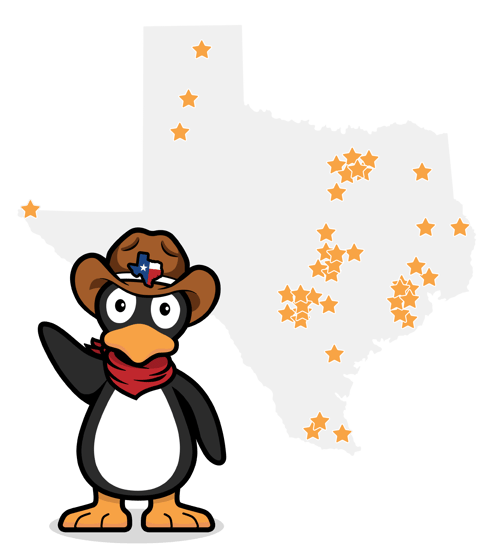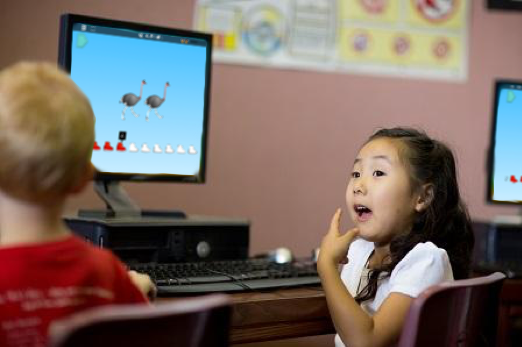
Thank you for joining us at the ST Math Leadership Symposium: The Quest for Next Level Learning.
Keep the learning going! Find recorded sessions and resources on demand below.
Learning loss… the term is everywhere, and it really does not honor the amazing effort and perseverance of educators, students, and families across the country.
What if we talked instead about taking our learning to the next level? Not just our students’ learning, but our own as an education community?
How can we educate our teachers to love teaching math, and help take their learning practices not just toward recovery but toward excellence?
Next Level Learning took place on January 25, 2022.
Stay tuned for details on the next ST Math user event!
Opening Keynote:
Making Math Human
James Tanton, Global Math Project
Mathematics is an intensely creative enterprise that has engaged humankind for thousands of years.
Humans continually create, invent, and discover mathematics. Humans continually use and enjoy mathematics.
So, how can we make sure that each and every human is properly invited to the wonders of mathematics?

Discover how spatial reasoning, problem solving, and game-based learning in ST Math can empower students to own their creativity, provide a more equitable learning environment, and prepare all of us to solve the world’s most challenging problems.

In this workshop, administrators are introduced to ST Math and its instructional power. Attendees will receive resources to set expectations, monitor implementation, and celebrate success.

Walk away with strategies for celebrating student achievement and success in the classroom, at the school level, and beyond.

This break-out session will explain the details of our journey as we went from the small action of getting students logged in to the bigger goal of using ST Math as a fully integrated tool in our math program.

Many elementary teachers didn’t become teachers because of their confidence in mathematics and need a little encouragement to see math in a more flexible way.

District and school level leaders, coaches, and teachers will gain ideas to plan for change using a theory of action to increase student learning.

In this session, we will dive into the strategies used to create a successful implementation and share the top 5 resources already available to help you today!

In this session, special guests Kathy Kuno & Deirdre Reyes will share about their experience implementing ST Math in their respective districts as well as field questions from the audience.

Did you know that schools that consistently used ST Math outgrew similar schools in statewide rankings by 14 percentile points? In this session we will dive into how you can use ST Math data & reports to make that same kind of impact!

Together we will establish habits that encourage mathematical discourse using ST Math in the classroom. These instructional techniques will lend more opportunities for rich mathematical discussions with students in varying classroom structures.

In this session, special guests Jerry Gargus & Dave Sawtelle will share about their experience implementing ST Math from the district administrator level, as well as field questions from the audience.

In this session, you will hear from MIND’s program development leaders about the newest ST Math curriculum, upcoming features for educators, and our additions to the Progressional Learning Catalog.

Come discover three simple ways to supercharge your JiJi culture through social media with insights from what’s worked for other schools!

Identifying the weak link in your ST Math Implementation; how to find it AND how to fix it in order to further the impact on results.
Closing Keynote: Helping Students Discover the Greatness Within
Twana Young, MIND Research Institute
Greatness sits in our classrooms every day.
Let's uncover that greatness by using an asset-based approach to help facilitate student thinking, position students as authors of their own learning, and support students in discovering the greatness within them.
We loved getting to meet and hear from our ST Math users at this conference – so much that we're planning another event!
Stay tuned for more information about another ST Math Leadership Symposium coming soon.

Check out the ST Math impact at schools and districts
across the country.
ST Math Pre-Kindergarten is a comprehensive blended learning curriculum that includes the five mathematics domains identified in the Texas Prekindergarten Guidelines by TEA: counting skills, adding to/taking away skills, geometry and spatial sense skills, measurement skills and classification and patterns skills. The program combines:
Learn more about ST Math: Early Learning.

Interested in bringing ST Math to your students?
There are several funding options including the Texas Math Innovation Zones* grant.
Grade K Numbers & Operations: K.3.A
Model the action of joining to represent addition and the action of separating to represent subtraction.
These puzzles ask students to model addition and subtraction by joining and separating birds on a telephone line. Students use the manipulative to find the total number of birds.

Grade 2 Numbers & Operations: 2.6.B
Model, create, and describe contextual division situations in which a set of concrete objects is separated into equivalent sets.
In this example the student has determined that if each purple monster eats 2 pears, as shown by the rate in the top left corner, than 8 pears should be separated equally to feed 4 purple monsters.

Grade 4 Numbers & Operations: 4.3.E
Represent and solve addition and subtraction of fractions with equal denominators using objects and pictorial models that build to the number line and properties of operations.
This puzzle asks students to match a collection of fractions represented with a circular model to a single point on the number line. The blue pieces represent positive numbers, the red indicates a negative number.

Grade 7 Expressions & Equations: 7.10.B
Represent solutions for one-variable, two-step equations and inequalities on number lines.
In this example, the student must find the value of variable “a”. This two-step equation, 4 + 3a = 7, is represented on a number line.

These puzzles ask students to model addition and subtraction by joining and separating birds on a telephone line. Students use the manipulative to find the total number of birds.


Represent and solve addition and subtraction of fractions with equal denominators using objects and pictorial models that build to the number line and properties of operations.
This puzzle asks students to match a collection of fractions represented with a circular model to a single point on the number line. The blue pieces represent positive numbers, the red indicates a negative number.

Represent solutions for one-variable, two-step equations and inequalities on number lines.
In this example, the student must find the value of variable “a”. This two-step equation, 4 + 3a = 7, is represented on a number line.

Exhibitor: Garrett Girouard
Presence: J. Ivan Alfaro, Wendy Coffman & Garrett Girouard
ST Math® aligns with the TEKS to ensure Texas students develop deep, conceptual understanding of math concepts to equip them for the challenges of the 21st century. Below is a small sample of ST Math puzzles that were designed to meet the rigorous demands of the Texas math standards.
| Grade K Numbers & Operations: K.3.A |
Grade 2 Numbers & Operations: 2.6.B |
Grade 4 Numbers & Operations: 4.3.E |
Grade 7 Expressions & Equations: 7.10.B |
Download the Texas Scope & Sequences for a full view into how ST Math learning objectives target key grade-level concepts and skills.
| Grade K Numbers & Operations: K.3.A |
Grade 2 Numbers & Operations: 2.6.B |
Grade 4 Numbers & Operations: 4.3.E |
Grade 7 Expressions & Equations: 7.10.B |